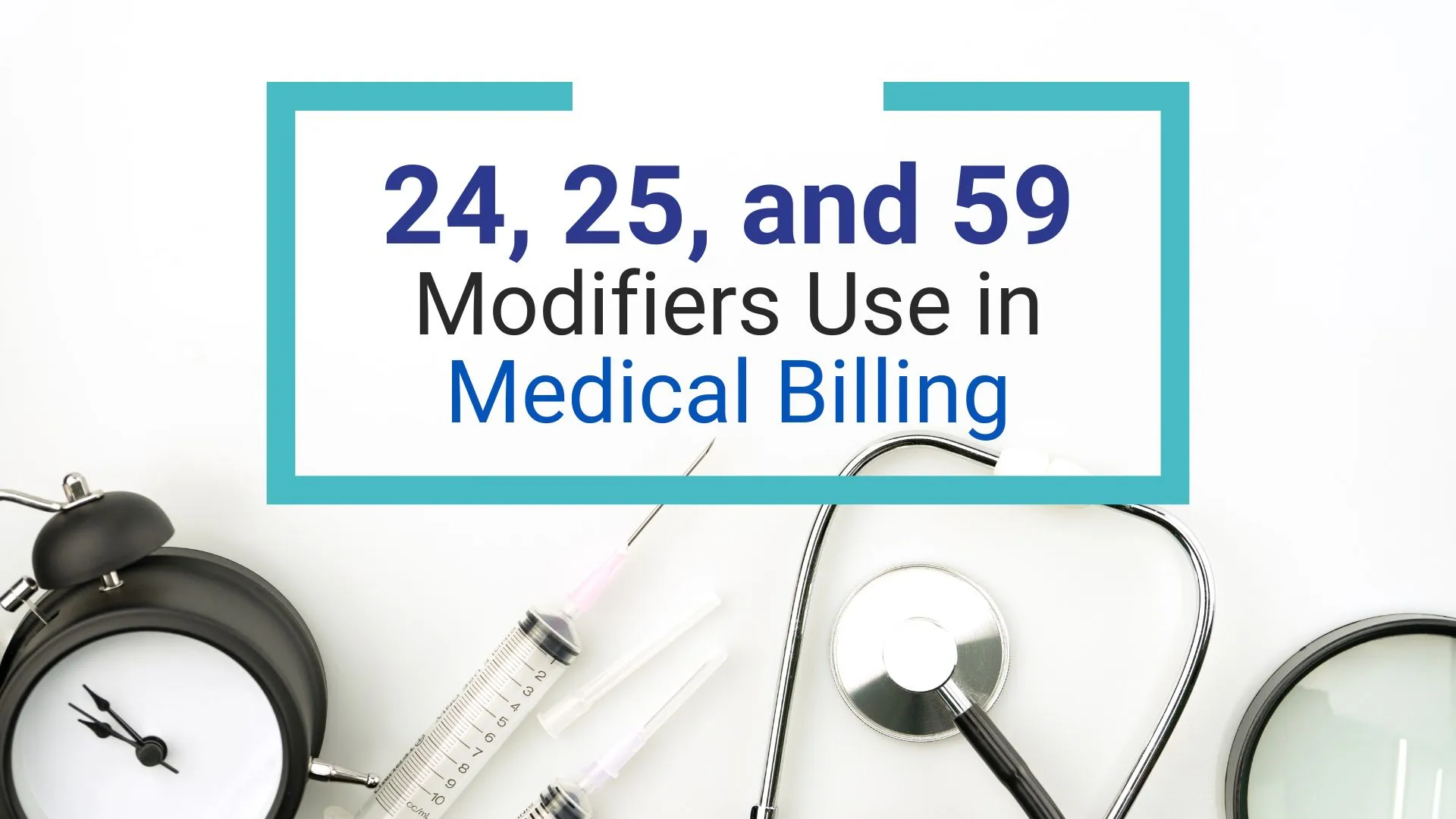Accessing the world of medical billing services can be a complex task, particularly when it comes to understanding how to use modifiers effectively. These small numerical codes can significantly impact the accuracy of billing and the reimbursement received from insurance companies. For healthcare administrators and medical billers, mastering modifiers is key to ensuring that services provided are accurately reflected and compensated. This article will explore the use of three essential modifiers—24, 25, and 59—and how they fit into the broader world of medical billing.
Overview
In the realm of medical billing and coding services, modifiers serve as a crucial tool for clarifying the details of healthcare services provided. Essentially, they offer additional information about a procedure or service, indicating that a particular service was altered in some way without changing the core definition of the code.
For medical billing companies, using these modifiers correctly is essential not only for accurate billing but also for maintaining compliance with insurance regulations. Misuse or misunderstanding can lead to denied claims, lost revenue, and potential audits. This article will provide a comprehensive guide to understanding, applying, and optimizing the use of modifiers 24, 25, and 59 in medical billing.
Definition of Modifiers in Medical Billing
Modifiers are numerical codes appended to CPT (Current Procedural Terminology) codes to provide additional context about the provided healthcare services. They are essential for adjusting or clarifying a service or procedure to reflect its complexity or unique circumstances.
By offering specific information, modifiers help medical billing services ensure that claims are processed accurately. They can indicate why multiple procedures were necessary, distinguish between separate services performed on the same day, or show that additional work was required beyond a standard service.
Importance of Modifiers in Accurately Reflecting Services Provided
For healthcare administrators, using modifiers is a way to communicate nuances in care delivery, ensuring that providers receive appropriate compensation. Correct modifier use prevents underpayments and safeguards against billing errors that could result in claim denials.
Modifiers play a pivotal role in demonstrating the necessity and scope of healthcare services. Therefore, medical billers and coding specialists must possess a deep understanding of when and how to apply them.
Detailed Explanation of Modifiers 24, 25, and 59
Modifier 24
Modifier 24 is used to indicate that an evaluation and management (E&M) service was performed during a postoperative period for a reason unrelated to the original procedure. This modifier ensures that additional, unrelated services are considered eligible for separate reimbursement.
For example, if a patient undergoes a surgery and later returns with an unrelated condition requiring attention, modifier 24 can be applied to the E&M service code to ensure that the provider is compensated for this additional service.
Modifier 25
Modifier 25 is appended to an E&M code when a significant, separately identifiable E&M service is performed by the same physician on the same day as another procedure. This modifier is crucial for distinguishing when an E&M service requires more than the usual pre- or post-procedure care.
Consider a scenario where a patient visits a provider for a scheduled minor procedure, but during the visit, a separate and significant issue is identified and addressed. Applying modifier 25 allows the billing to reflect both services accurately.
Modifier 59
Modifier 59 is used to indicate that a procedure or service was distinct or independent from other services performed on the same day. It is often applied to identify procedures that are not normally reported together but are appropriate under the circumstances.
For example, if two distinct procedures are performed on different body parts during the same visit, modifier 59 can clarify this distinction and ensure correct billing.
Real-World Examples of How These Modifiers Are Applied in Medical Billing
Let’s explore some scenarios to illustrate the application of these modifiers. A dermatologist performing both a skin lesion removal and a separate E&M service addressing a patient’s unrelated skin condition on the same day would use modifier 25 for the E&M code.
In another case, an orthopedic surgeon treating a patient post-surgery for a new and unrelated knee injury would utilize modifier 24 for the E&M visit. Lastly, modifier 59 may be used when a chiropractor performs spinal manipulations on different regions of the spine in a single session.
How the Correct Use of Modifiers Affects Reimbursement Rates
Accurate application of modifiers directly impacts reimbursement. When modifiers are correctly used, insurance companies and medical billing companies are more likely to process claims efficiently and with full compensation. Errors in modifier usage can lead to delays, reduced payments, or outright denials.
Understanding the nuances of these modifiers enables medical billing services to maximize revenue and minimize issues with claims processing. This makes proper modifiers a critical skill for anyone involved in the billing process.
Documentation Requirements for Using These Modifiers
Accurate documentation is paramount when using modifiers. For each claim, medical billing and coding services must ensure that the medical record includes detailed notes supporting the use of a specific modifier. This documentation should clearly justify the necessity of a service and its distinction from other procedures performed on the same day.
During audits, insurance companies scrutinize documentation to validate the use of modifiers. Proper records can protect providers from potential revenue loss and demonstrate compliance with industry standards.
Best Practices for Using Modifiers
Tips for Medical Billers and Healthcare Administrators on Correctly Applying Modifiers
To ensure accurate billing, medical billers should:
- Stay updated on coding guidelines and insurance policies.
- Provide thorough training for staff involved in billing processes.
- Regularly review and audit claims to maintain accuracy and compliance.
Developing a robust understanding of when and how to apply modifiers will aid medical billing companies in minimizing claim rejections and optimizing reimbursements.
Strategies for Avoiding Common Mistakes in Modifier Use
Avoid these common pitfalls with the following strategies:
- Double-check coding combinations for errors.
- Use modifier indicators as a guide based on the specifics of each case.
- Implement a meticulous quality control process to catch potential mistakes before submission.
By incorporating these strategies, medical billing services can enhance accuracy and avoid costly errors.
Conclusion
Modifiers are an integral part of the medical billing and coding services process, offering essential clarity and specificity to healthcare claims. For medical billing companies, effective use of modifiers like 24, 25, and 59 is crucial for ensuring accurate reimbursement and maintaining compliance with industry standards.
Understanding and applying modifiers correctly can significantly impact the financial health of a healthcare practice. For professionals seeking to optimize their billing processes, consulting with a professional medical billing company like Providers Care Billing LLC, can provide valuable insights and support. By mastering these nuances, medical billers and healthcare administrators can achieve a smoother billing experience and better financial outcomes.




